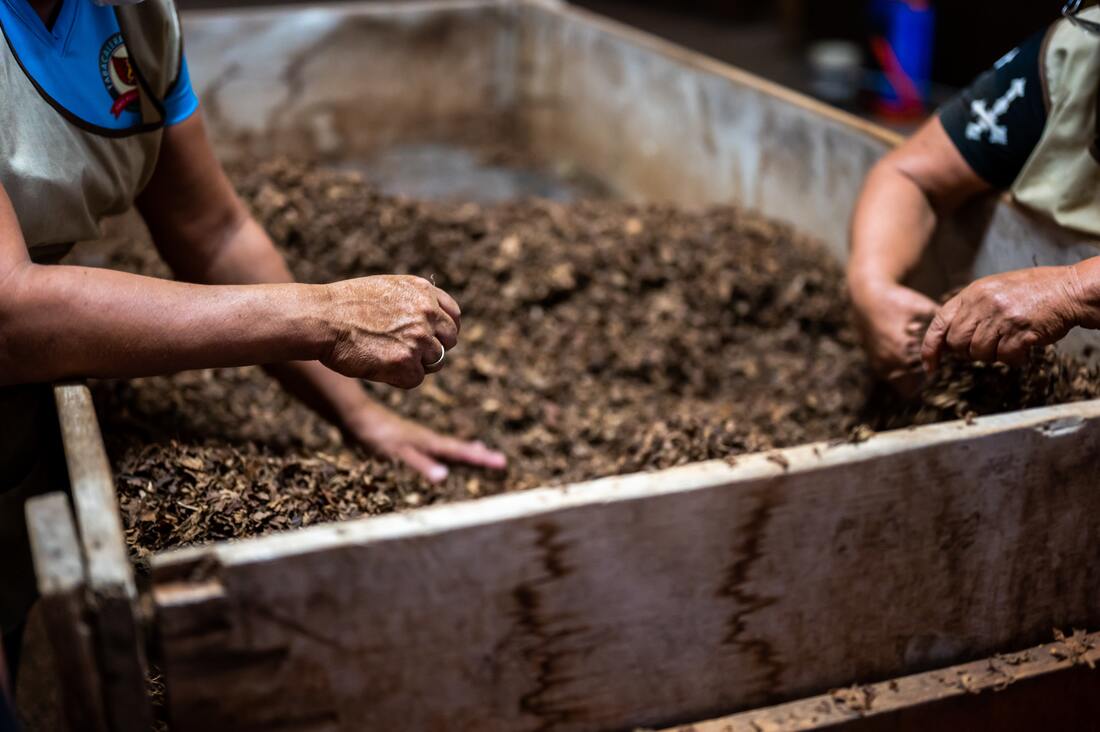|
Composting is holy. Literally. It’s not just a metaphor for holiness. It’s not only the manifestation of the sanctified life. Rather, composting is embodied holiness. The ongoing, daily chore of intentionally layering organic material into a rotting lasagna may sound gross, but it is plainly and simply participation in perfect love. Perhaps more poetic and therefore more honoring to the beauty that is decomposing matter is this: Participating in the divinely created process of regeneration that is the collaborative effort of billions of microbiological life-forms all embodying a spirit of self-giving (love) for the purpose of communal nourishment, is to embody, I think, what we Nazarenes have long called holiness. I wouldn’t dare limit the definition of sanctification to only composting! But I will ask if our historical definition has been too limiting. Has God written into creation from the beginning holy, grace-filled systems that we can participate in, embody, and even contribute to? I believe so. Composting is one of them. I’ve seen it in the understory of the rainforest on the Washington coast. I’ve seen it in mineral-rich soil under the palm branch mulch on the Big Island. I’ve seen it in the decomposing logs on the banks of the seasonal creeks in California. And I see it in the compost piles at my house. We don’t have heavy machinery on our property. No tractor or tiller or chipper—just a few beat-up power tools from Home Depot, rakes, shovels, and pitchforks. In other words, most of the work we do is manual. But that doesn’t mean we don’t have help. Clearing forest, mowing fields, pruning trees, and keeping the blackberries at bay are mostly the work of employees I don’t even compensate: goats. Our milk goats contentedly prune and rake and collect thousands of pounds of vegetation every year. And they haul it without coaxing to a centralized location for pickup. All of that vegetation is dropped in small pellets every night in the barn. As a token of our appreciation for the goats gathering all that vegetation, we make sure to give them clean sleeping quarters. Their bedding gets a fresh “dusting” of straw every night. Every three months, we muck the stalls, which means we’re moving two cubic yards of straw, urine, and droppings. Roughly a third of the material is the droppings, and two-thirds is urine-saturated straw. That means the accumulated material, with a little help from the rain, is a perfect balance of nitrogenous and carbonaceous material to promote maximum microbiological activity. That two yards of “waste” will become about five wheelbarrows of black compost in two years—one-eighth of our garden needs. As you can imagine, the barn “waste” flattens out and mats together when left in an exposed pile. It creates an anaerobic environment, suffocating all the microbes that, like you and me, depend on oxygen. Consequently, the overall temperature of the pile drops. We learned early on that we need compost every year. Every other year wasn’t going to work. In order to speed up the decomposition, the pile needed two things: accessible oxygen all the way to the center and a minimum depth of three feet. Remember, we don’t have a tractor to turn the pile, and I didn’t want to spend hours a week turning compost. I quite liked the goats doing most of the work. I stumbled upon a solution while mowing the lawn last year. The pile of pure grass clippings matted together and emitted a putrid smell—a sign of anaerobic rot. But the pile next to it that came from under the maple tree was light, fluffy, and odorless—signs of an aerobic environment. By adding mulched leaves to the clippings, we incidentally created a much more hospitable environment for biological activity to flourish. That’s it! I thought. Our compost piles are not diverse enough. We now make four-foot diameter rounds with field fencing and literally throw everything in them that can decompose. Junk mail, garden clippings, tissues, cracker boxes, fruit rinds, chicken manure, potato skins, small branches . . . everything. What we end up with is a really aerated milieu of compostable trash. And then when we add our quarterly barn “waste” it builds a vertical, compostable lasagna. Our compost problems were solved. Instead of two yards of waste, we were now gathering four yards every three months. That’s eight cubic yards of material every year! And it breaks down at twice the rate. That means, over the course of a year, we now produce roughly 45 wheelbarrows of compost, with no turning. That’s all the compost our vegetable garden needs for the entire year. (For those curious, that’s a half inch of compost for nine of our 100 foot beds, every year.) On the surface, this appears as a story about goat poop, a nerdy hobby farmer, grass clippings, and house trash. But just below the surface, this is a story about many partners learning to work together. It’s a story of billions of microorganisms, nematodes, insects, and mammals, partnering in the sacred work of overcoming the power of death, for the sake of regenerative health and mutual flourishing. Composting is a chore. A craft, even. But it’s also embodied holiness. It is sanctification. Literally. - Ryan Fasani is a pastor, kingdom farmer, and writer in Bellingham, Washington.
0 Comments
|
N4CC ScriptsScripts is a collaborative effort from a wonderful "cloud of witnesses" writing on issues of creation care. All contributors are Christians seeking to embody earth care in their own context. Archives
December 2023
|

 RSS Feed
RSS Feed
